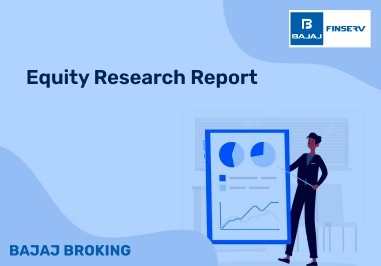Project finance refers to funding long-term initiatives, such as public infrastructure or large industrial projects. It follows a structured approach where financing is secured specifically for capital-intensive projects.
The key aspect of project finance is that the cash flows generated by the project are used to repay the debt and meet other financial obligations. In this blog, we will explore the meaning of project finance, how it works, and its key components in detail.
What is Project Finance?
Project finance is used to fund long-term projects, like a bridge or a highway, which have a long gestation period. This means it takes a long time for them to get completed and start generating a return. Hence, a specific financial structure is required to fund them.
Being long gestation projects, they are highly risky. Typically, the government works with private companies to build such projects. To make them viable for companies involved, such projects remain off-balance sheet. Let us understand how.
When a company takes debt to finance a long-term project, that debt is not shown on its books. Typically, companies create a subsidiary with a minority interest, and such debt is shown on the books of that subsidiary.
When a long-term project starts generating cash flows, those cash flows are used to pay all the obligations taken to finance such projects, including loans, interest, etc. Having understood the project finance’s meaning, let us dig deeper into this topic.
Key Features of Project Finance
Wondering about the key features of project finance? Find them here:
Capital Intensive Financing Scheme: Project finance requires significant capital investments in a project. Typically, such projects are in sectors like infrastructure, energy, etc., which need substantial investments. These projects are long-term in nature and have huge development costs. Investors provide funds based on the expected cash flows from a project and not based on the balance sheet of the companies involved.
Risk Allocation: Project finance is provided to projects with a long gestation. Hence, the risk in such projects needs to be carefully allocated to various parties involved, including investors, lenders, project sponsors, and the government. Risk allocation takes place based on how much returns a participant expects from a project and how much risk it wants to bear.
Multiple Participants: Such projects are undertaken by several participants, including sponsors (they provide equity for a project and are responsible for its overall management), lenders (banks and other financial institutions that provide loans for such projects), contractors (they build and/or operate a project), investors (they provide equity to a project in lieu of a stake), and the government (it provides funding, permits, and sometimes guarantee for such projects).
Asset Ownership: Typically, a special purpose vehicle (SPV) owns a project built using project finance. This vehicle is created by a sponsor to build and operate a project. As it is a separate entity, it protects parent companies from financial risks involved in such projects. SPVs that own assets built using project finance tend to be a limited partnership or a limited liability company.
Limited Recourse Solution: In project finance, lenders can seek repayment of the debt they have provided from the cash flows and assets of a project and not from the sponsors of a project. In other words, lenders can recover their loans only from the project they financed and not from the sponsors of that project. Due to this, sponsors’ risk is reduced and hence they find it easier to get involved with long-term projects.
Improved Tax Treatment: Project financing can offer tax advantages to various parties involved in a project. For example, companies can take the benefit of tax deductions or credit available for certain kinds of projects. That said, tax regulations regarding project financing may vary from country to country and project to project. Hence, thorough knowledge is required to make the most of such regulations.
Additional Read: What is Trading Account: Definition, Types & Benefits
Components of Project Finance
Let us understand the components of project finance:
Equity Contribution: The funds provided by the sponsors of a project are called “equity contribution,” which is necessary to cover the initial costs of a project. Besides, equity contribution also demonstrates sponsors’ commitment towards a project to its lenders. The sponsors, who provide equity, expect to earn higher returns over the life of a project as the project generates cash flows and its value appreciates over a period of time.
Debt Financing: When banks or other financial institutions provide a loan for a project, it is called debt financing. Due to their very nature, loans are provided for a certain duration and at a specified rate of interest. Lenders must examine the risk involved in a project and expected returns before providing loans to it. The funds provided by lenders help project sponsors to utilise leverage to their advantage.
Risk Allocation and Management: As projects tend to be long-term in nature, they are inherently risky. Typically, a project involves construction risks and operational risks. These risks need to be distributed across all the participants of a project based on their ability to deal with these risks and the returns they expect from a project. Further, these risks need to be clearly defined and explained in contracts so that there is utmost clarity about them.
Types of Project Finance
The types of project finance are explained below:
Infrastructure Projects: Project finance is used to finance various kinds of infrastructure projects, such as bridges, railways, roads, airports, seaports, sewerage systems, etc.
Energy and Power Projects: Often, project finance is used to fund a wide range of energy projects, including a power plant, a power transmission line, or a substation. Such projects need a long period of time to build and then to operate. Hence, project financing is necessary for them.
Real Estate and Construction Projects: At times, a number of investors pool their resources to build a large-scale real estate and construction project. The investors in such projects can include traditional banks, lenders, and equity providers.
Process of Project Finance
The following steps explain how project finance works in real life:
· Before financing a project: The process starts with a project sponsor assessing all the risks involved. He also finds ways to minimise the risks so that a project remains viable. Then, he examines the financial and technical feasibility of a project.
· Financing: Now, the sponsor makes a list of various kinds of investors, which can provide financing to a project. After finding the investors, the sponsor has to negotiate the terms of the contract with them.
· After financing: Having the financing has been arranged, the sponsor monitors the progress of a project. He ensures that the project gets completed within the time mentioned in the contract. Once the project starts generating cash flows, the sponsor ensures that the loan taken is repaid to the lenders.
Additional Read: Call and Put Options: Meaning, Types & Examples
Advantages and Disadvantages of Project Finance
Advantages of project finance
- Favourable for sponsors: Project financing has the benefit of being non-recourse, which means that the lenders are repaid their loans from the cash flows of a project and not from the cash flows of its sponsors. If a project is unable to generate sufficient cash flows, its lenders cannot ask its sponsors for loan repayment.
- Risk sharing: The sponsors of a project can share the risks involved with all the stakeholders of a project, including the government, lenders, and other equity investors.
- Off-balance sheet treatment: The loans taken for a project are not shown on a sponsor’s balance sheet. Instead, such loans are shown on the balance sheet of the SPV created for a project. As a result, sponsors can take loans for other activities related to their business.
Disadvantages of project finance
- Complicated process: Due to its very nature, project financing is complex. It requires the involvement of several stakeholders, who need to negotiate with each other in terms of how much risk they want to bear and how much return they expect. Besides, they have to negotiate regarding several legal and operational aspects of a project.
- High transaction costs: As project financing is complex, it requires considerable transaction costs related to documentation regarding borrowing, issuing stock, etc. Besides, several parties are involved in a project, which results in different kinds of contracting costs.
Project Finance vs. Corporate Finance
Criteria
| Project Finance
| Corporate Finance
|
Nature of an asset
| Project finance is used to finance long-term infrastructural, power, and other projects.
| Corporate finance is used to provide finance to companies for their short- and long-term needs.
|
Structure
| The assets and debts of a project are shown on the balance-sheet of an SPV, which is separate from the companies involved in a project.
| Corporate finance is shown on the books of the company that has taken a loan.
|
Duration
| Project finance is typically provided for several decades.
| Corporate finance is usually provided for 3-5 years.
|
Terminal value
| Project finance is provided for a project, which is an asset, like a bridge, road, etc. The value of assets deteriorates over a period of time. Hence, the terminal value in this case is negligible.
| Terminal value in the case of corporate finance is typically huge because most companies last for a long period of time.
|
Now that we have discussed project finance vs. corporate finance, let us talk about other aspects related to project finance.
Role of Financial Institutions in Project Finance
Financial institutions play many important roles when it comes to large-scale, long-gestation projects. To begin with, they assess the feasibility of such projects, which also involves proposing the appropriate financial structure for a project.
If a project is viable, financial institutions offer funding in the form of equity and debt. They estimate the cash flows from a project and based on that offer loans to it. Institutions also syndicate loans by involving several lenders to diversify the risks involved and raise a significant amount of capital.
Apart from providing finance, such institutions advise project sponsors regarding contract negotiation, risk management, and the structuring of financial agreements.
Significance of Project Finance
Project finance is used to build long-term infrastructure projects, such as bridges, roads, highways, seaports, airports, etc. Without project finance, it is not feasible to arrange funds for projects with a long gestation period.
Besides, project finance allows the sharing of risks between many parties involved. As a result, one lender or one sponsor does not have to take significant risks. Moreover, project finance allows companies to show the liabilities of a project as off-balance sheet items. Hence, the overall financial situation of a project’s sponsor is not affected even if a project does not perform well.
Conclusion
When it comes to long-term and long-gestation projects, project finance is extremely important worldwide. Close home in India, many projects, like highways, airports, and bridges, are built using project finance.
Such finance allows many stakeholders to share risks amongst themselves. Besides, companies can show the financials related to a project as off-balance sheet items, thereby not impacting their financial situation much. And, most importantly, project finance helps build public assets that are used for generations for the welfare of people.
Disclaimer: Investments in the securities market are subject to market risk, read all related documents carefully before investing.
This content is for educational purposes only. Securities quoted are exemplary and not recommendatory.
For All Disclaimers Click Here: https://bit.ly/3Tcsfuc













